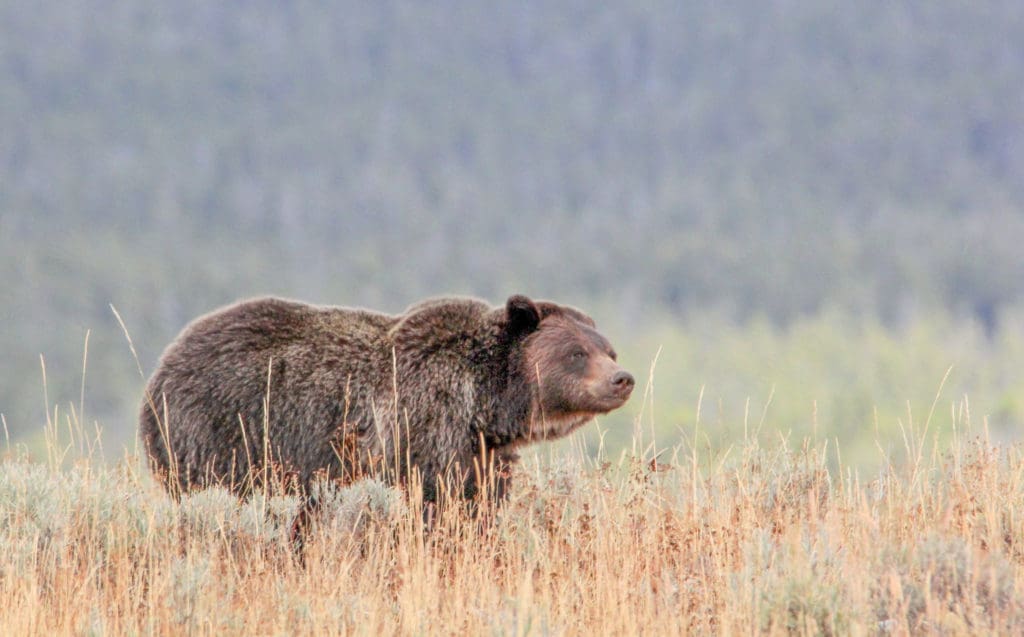Grizzlies moving south because of you
Persistence pays off.
For years, Y2Y and partners, including Vital Ground, have been working to recover the local grizzly population and improve wildlife corridors in northwest Montana and northern Idaho.
The hope was that a healthy population would expand their range and find their way south into the unoccupied Bitterroot Wilderness of central Idaho. Now, a grizzly has been recorded in a spot where the bruins haven’t been seen in some time.
The three-year-old male bear was moved to western Montana from a nearby ecosystem in 2018, as part of an effort to restore the bear population in an area known as the Cabinet-Yaak, named for nearby mountain ranges.
According to a report from U.S. Fish and Wildlife, this bear was spotted crossing the Clark Fork River numerous times this spring and was recently seen just a few miles north of Idaho’s Highway 12.
This news is particularly exciting since Y2Y with Vital Ground purchased some land on the Clark Fork River next to I-90 in December 2018, to help make movement for bears and other large wildlife here a bit easier. That bear passed near that property this spring.
This bear has even been tracked spending time in the Selway-Bitterroot Wilderness Area — an ideal safe place for a grizzly — as well as other locations in the Yellowstone to Yukon region such as the Nez Perce-Clearwater National Forest.
It is among the first grizzly bears to show up since 1932 when the last known resident grizzly bear was shot in the Selway-Bitterroot Ecosystem.
“This is proof that bears can return to central Idaho, and it’s happening now. This news is important because verified data about bears and other wildlife movement will inform future forest planning in the nearby Bitterroot mountains — considered prime grizzly habitat,” says Jessie Grossman, Y2Y’s Cabinet Purcell Mountain Corridor project coordinator.
Y2Y is currently engaged in supporting the forest planning process for the Salmon-Challis National Forest and preparing to participate in the Bitterroot National Forest planning process — one still in its early stages.
Moving ahead on grizzly recovery
Grizzlies once roamed much of the Great Plains, including parts of California. But as their populations shrank, so has their range.
In 1993, a recovery plan started northwest Montana at a time when the Cabinet-Yaak ecosystem grizzly count was about 10 bears.
Thanks to the support of our donors, Y2Y — along with agency partners and other non-profits — began working to help connect and protect habitat for grizzlies in the larger Cabinet-Purcell Mountain Corridor.
These efforts have been working and there are now an estimated 55 to 60 grizzlies living in the cross-border Cabinet-Yaak ecosystem.
As bears move back into their former territory, education and community support is needed to make the region safe for people and bears. Grizzlies have large ranges so it’s in our best interest to be ready, and we’re happy to be hosting bear safety workshops this summer as well.
When this particular grizzly started moving south, he began clearing the way for wiser decision-making and a better future for fellow bears. It’s encouraging to get this news and see these large animals moving in the ways scientists had hoped they would.
So far, this bear has stayed out of trouble. He has also captivated local communities in Montana and Idaho who have been following reports of his travels in the media.
We’re thrilled by this news and hope you are too — after all, your support is what helps us make these significant strides.


